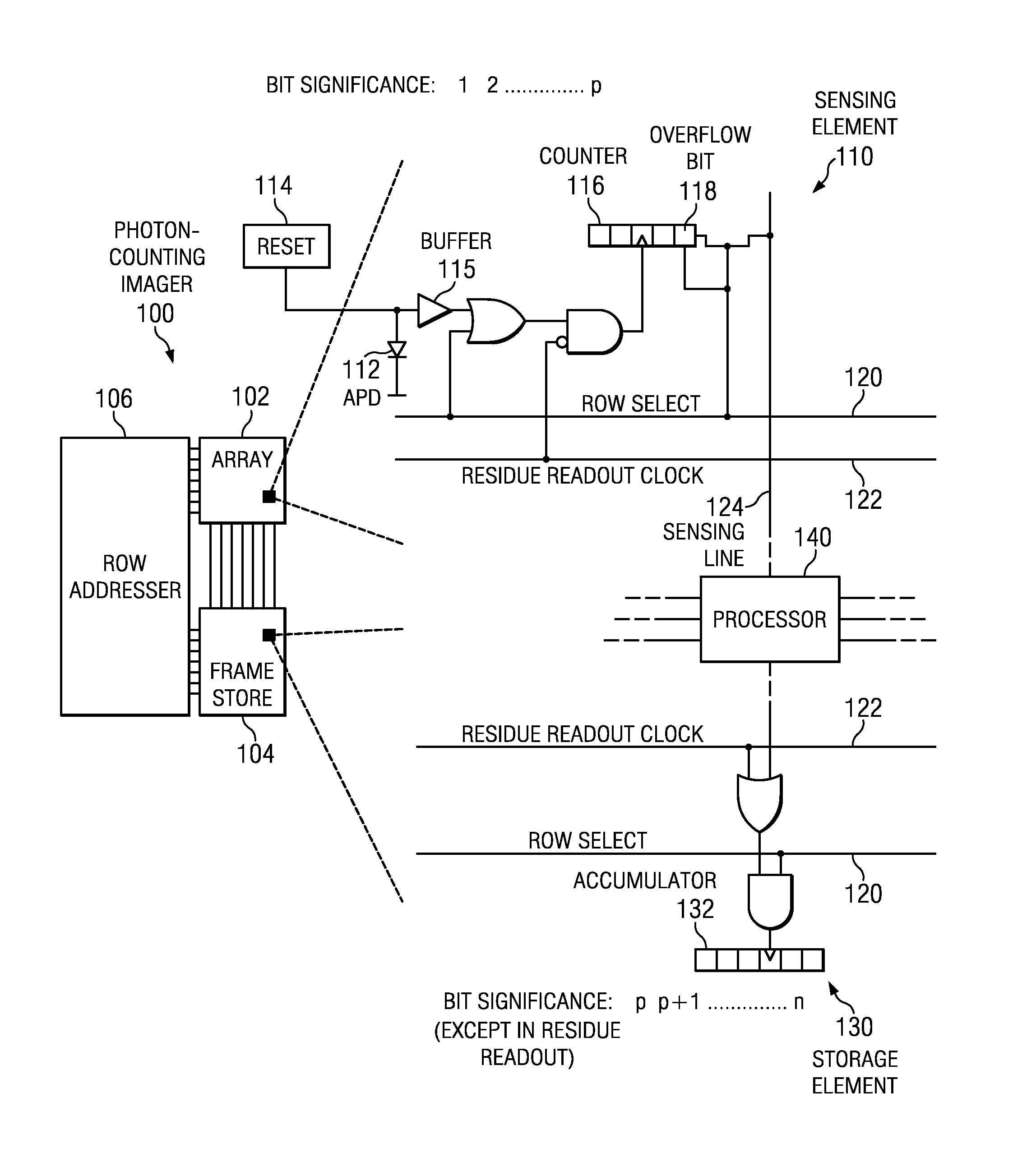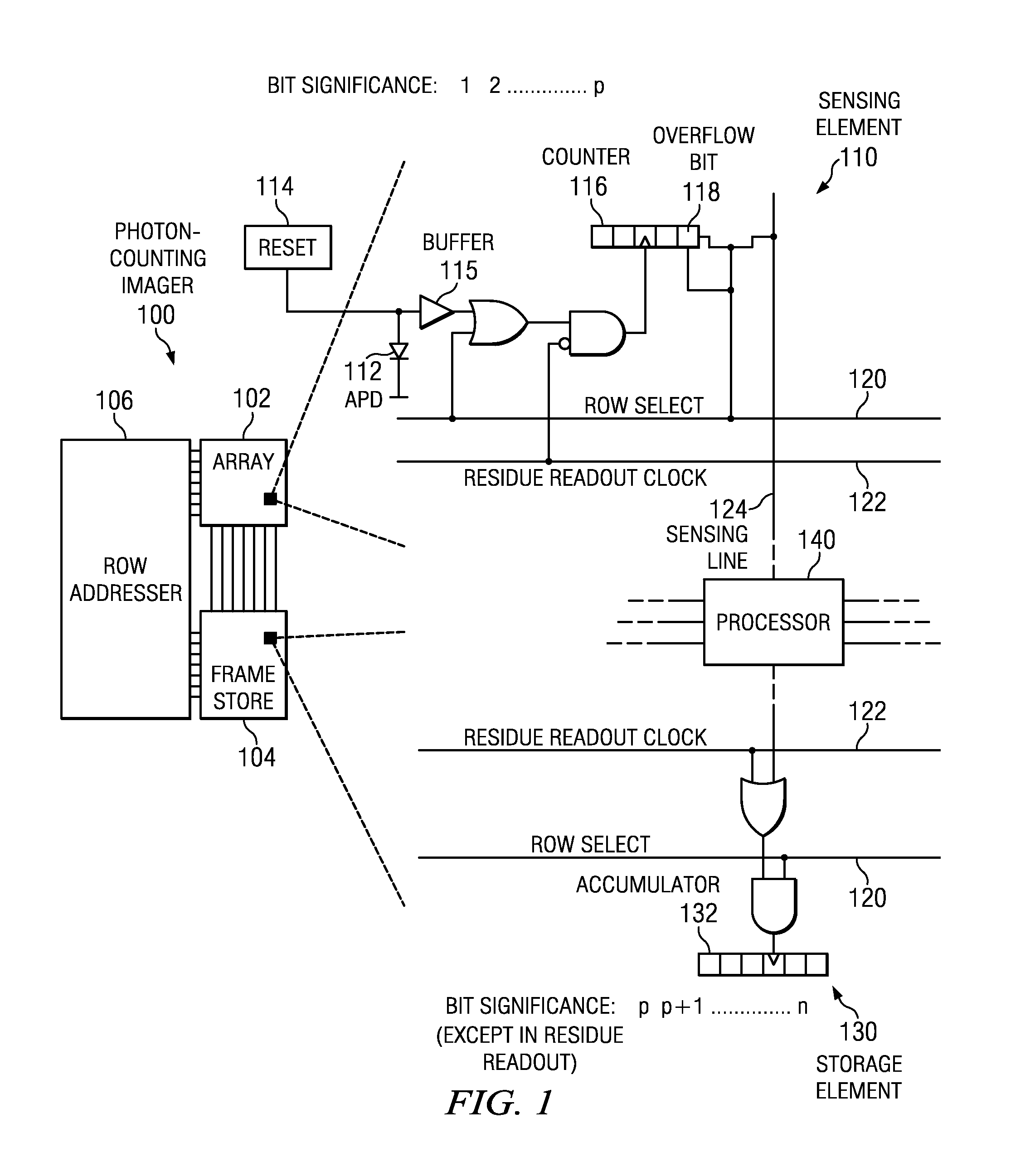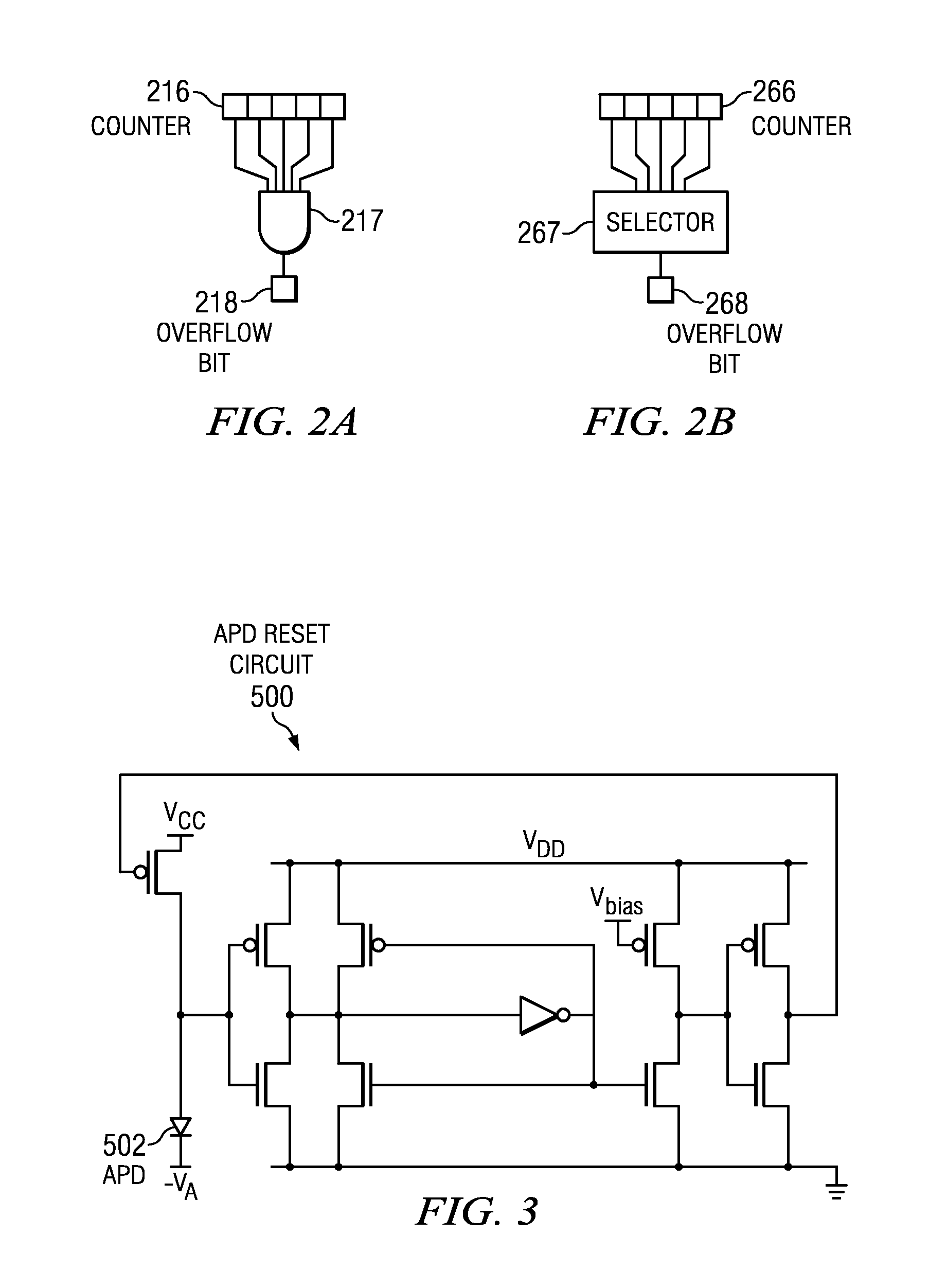CMOS readout architecture and method for photon-counting arrays
a readout and array technology, applied in the field of photon-counting array readout architecture and method, to achieve the effect of less power, lower transfer bandwidth, and higher dynamic rang
- Summary
- Abstract
- Description
- Claims
- Application Information
AI Technical Summary
Benefits of technology
Problems solved by technology
Method used
Image
Examples
Embodiment Construction
[0020]A description of example embodiments of the invention follows.
[0021]Photon-counting imagers with counters and an overflow bit in each sensing element can be used for medical and defense applications; quantum computing; cryptography and information technology; scientific imaging; and imaging for the scientific and consumer markets. For example, photon-counting imagers can be used for imaging laser radar, as described in B. F. Aull et al., “Geiger-mode Avalanche Photodiodes for Three-Dimensional Imaging,” Lincoln Laboratory Journal 13(2): 335-349, 2002, incorporated herein by reference in its entirety.
[0022]FIG. 1 shows a photon-counting imager 100 with sensing elements 110 that include overflow bits 118 to support serial readout. The imager 100 includes a two-dimensional array 102 of sensing elements 110, one of which is shown at right. Typically, the array 102 is arranged or disposed at the focal plane of a lens or imaging system (not shown), although the array 102 may also be...
PUM
 Login to View More
Login to View More Abstract
Description
Claims
Application Information
 Login to View More
Login to View More - R&D
- Intellectual Property
- Life Sciences
- Materials
- Tech Scout
- Unparalleled Data Quality
- Higher Quality Content
- 60% Fewer Hallucinations
Browse by: Latest US Patents, China's latest patents, Technical Efficacy Thesaurus, Application Domain, Technology Topic, Popular Technical Reports.
© 2025 PatSnap. All rights reserved.Legal|Privacy policy|Modern Slavery Act Transparency Statement|Sitemap|About US| Contact US: help@patsnap.com



